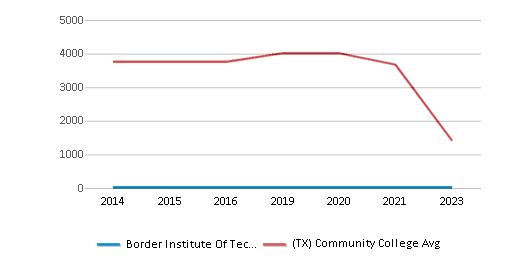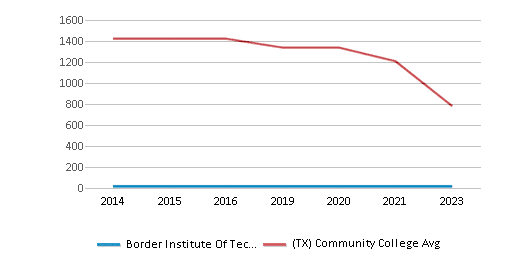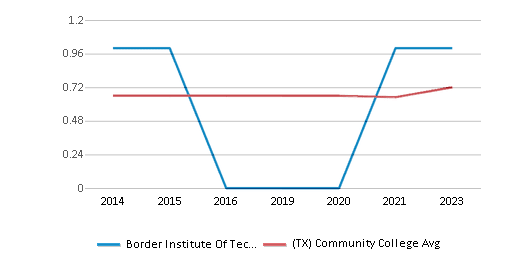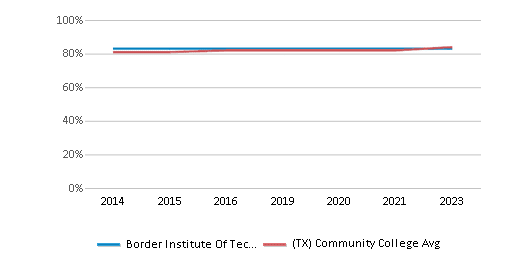- Border Institute Of Technology (BIT) intent to provide quality degree programs in a flexible environment. This goal has been accomplished by adopting an innovative approach to traditional education; combining self-study with direct personal contact and technology. A unique aspect to BIT programs is the one-on-one instruction students receive from a distinguished national faculty. Although the University has taken advantage of advancements in technology to improve instruction, technology is regarded as an enhancement rather than a replacement for good teaching and relevant content. Students enjoy an educational climate that is typical of one found on a small traditional campus. This is made possible at a distance through a centralized Learning Network; emphasizing committed student service and open communication. BIT offers programs which afford a rich opportunity for U.S. and Non U.S. residents to match their desire to develop intellectually and professionally.
School Highlights
Border Institute Of Technology serves 22 students
Minority enrollment is 100% of the student body (majority Black and Hispanic), which is less than the state average of 74%.
Quick Stats (2025)
- Enrollment: 22 students
- Source: Integrated Postsecondary Education Data System (IPEDS)
Top Rankings
Border Institute Of Technology ranks among the top 20% of public schools in Texas for:
Category
Attribute
School Overview
Border Institute Of Technology
(TX) Community College Avg.
Carnegie Classification
Associate of Arts Colleges
Baccalaureate/Associate's Colleges: Associate's Dominant
Institution Level
Less than 2 yrs
At least 2 but less than 4 years
Institution Control
Private, for profit
Private, for profit
Total Faculty
n/a
262 staff
Student Body
The student population of Border Institute Of Technology has stayed relatively flat over five years.
The Border Institute Of Technology diversity score of 1.00 is more than the state average of 0.70. The school's diversity has stayed relatively flat over five years.
Total Enrollment
22 students
1,396 students

Student : Teacher Ratio
n/a
23:1
# Full-Time Students
n/a
890 students
# Part-Time Students
n/a
4,022 students
# Enrollment Undergraduate
n/a
403 students
# Full-Time Undergraduate Students
16 students
890 students

# Full-Time Graduate Students
n/a
40 students
# Part-Time Undergraduate Students
6 students
4,022 students
# Part-Time Graduate Students
n/a
47 students
Total Dormitory Capacity
n/a
252 students
% Asian
n/a
6%
% Hispanic
n/a
46%
% Black
n/a
14%
% White
n/a
26%
% Two or more races
n/a
3%
% Non Resident races
n/a
2%
% Unknown races
100%
3%
Diversity Score
n/a
0.70

College Completion Rate (Students who graduate in less than 4 years)
n/a
0.5469%
College Completion Rate (Students who graduate in 4 years or more than 4 years)
n/a
0.3357%
Tuition and Acceptance Rate
% Students Receiving Some Financial Aid
83%
84%

Median Debt for Graduates
n/a
$10,765
Median Debt for Dropouts
n/a
$5,500
Acceptance Rate
n/a
81%
Source: 2023 (or latest year available) Integrated Postsecondary Education Data System (IPEDS)
School Notes
- Border Institute of Technology, formerly Southwest Institute, was established to fill a continuing and critical need for the large fashion segment of the El Paso garment industry. As the brainchild of Mary Frances Simon, President, it is an outgrowth of her former business, Mannequin Manor Finishing and Modeling School, Inc., established in 1964. From the beginning, Mrs. Simon was adamant in affirming that individual growth is the primary goal of any sound educational program. Her initial efforts focused on fashion show production and modeling, and her expertise resulted in her professionally trained models extending their careers into the world of fashion design, buying, writing, and merchandising. By 1969, she had expanded the curriculum to include Fashion Merchandising and Interior Design. In 1979, the school acquired the spacious quarters it still occupies at 9611 Acer Avenue, with an initial 10,000 square feet of space. In 1982, the school became the Southwest Institute of Merchandising and Design. At that time, it was granted approval to issue Associate of Applied Arts Degrees in the areas of Fashion Merchandising and Interior Design, with an optional third-year professional certification for the Interior Design program. In 1984, an Associate of Applied Sciences degree with a major in Hotel/Motel Administration was added. Endorsed by the Educational Institute of the American Hotel and Motel Association, it also included an executive certification option. In 1998, the Hotel/Motel Administration was dropped from the school curriculum. During 1985, two additional majors were approved: Microcomputer Applications and Business Management. An additional 12,500 square foot building was purchased next to the original one. The Art and Interior Design facilities are located in the second building, as is the staff of the Microcomputer Applications Department. The equipment is state-of-the-art, and the facilities are the equal of other fine schools everywhere. In 1989, the school opened the Accelerated Learning Center. Programs offered at Border Institute of Technology includes CADD, Network Technologies, Hands-On PC, Web Design and Network Security.
Frequently Asked Questions
What is Border Institute Of Technology's ranking?
Border Institute Of Technology ranks among the top 20% of community college in Texas for: Average community college minority breakdown.
In what neighborhood is Border Institute Of Technology located?
Border Institute Of Technology is located in the East El Paso neighborhood of El Paso, TX. There are 1 other community '.college.' located in East El Paso.
Recent Articles

Obtaining Your Bachelor's Degree at a Community College
Explore the evolving landscape of community colleges offering bachelor's degrees, addressing affordability, accessibility, and workforce needs.

A to Z of Community College Certificates and Courses
From business and healthcare to technology and skilled trades, the article showcases the breadth of options available to students seeking to enhance their knowledge, develop new skills, or pursue career advancement.

What is a Community College?
This comprehensive guide explains what a community college is, its history, and its role in higher education. It covers the types of programs offered, differences from four-year colleges, benefits of attending, and important considerations for prospective students, providing valuable insights for those exploring educational options.






